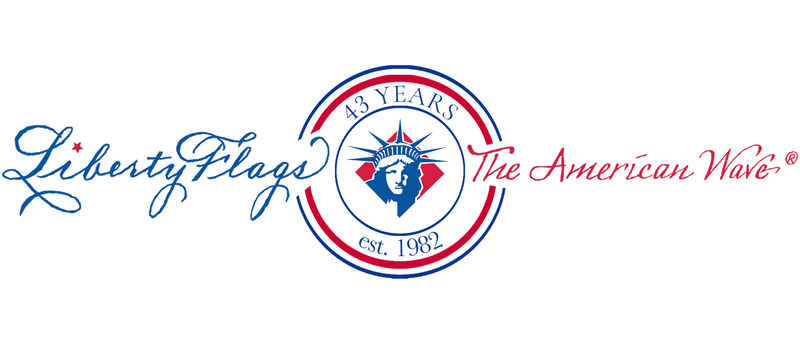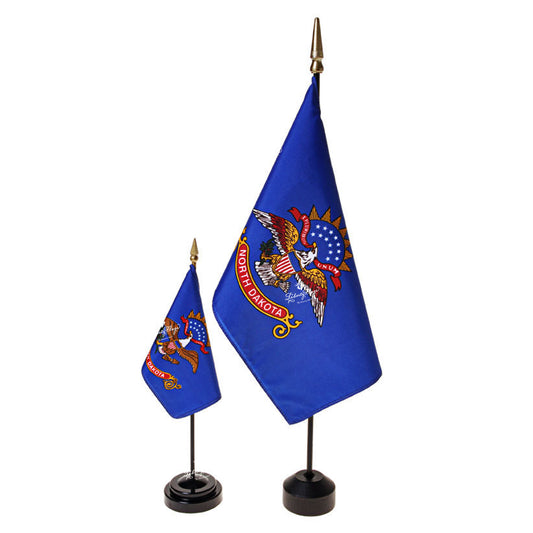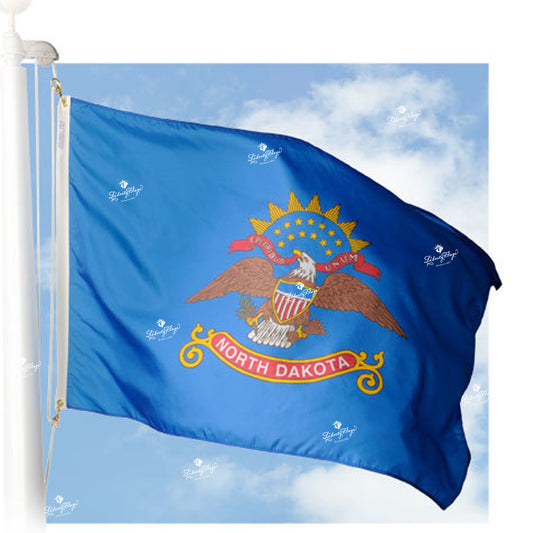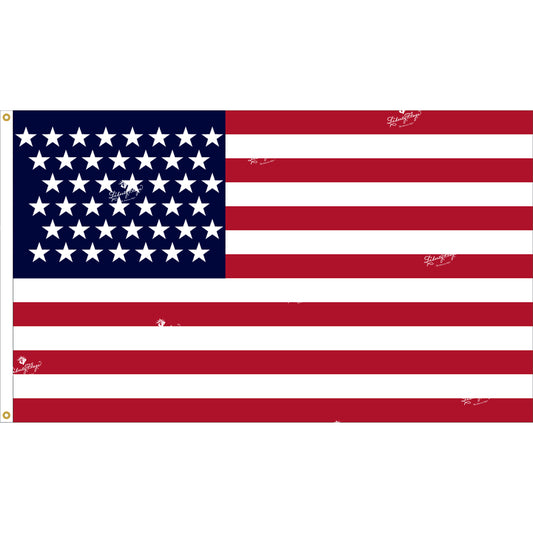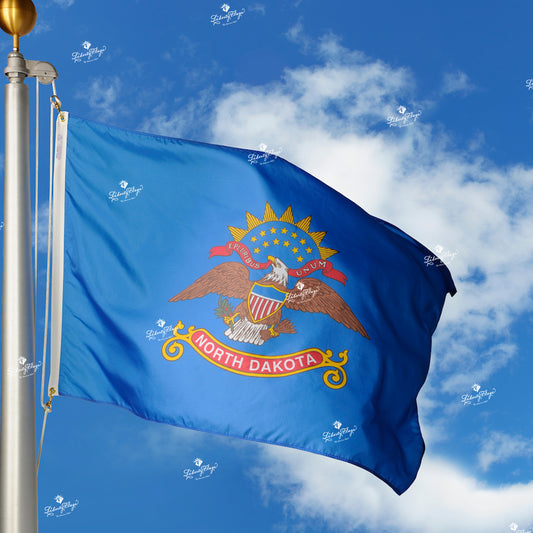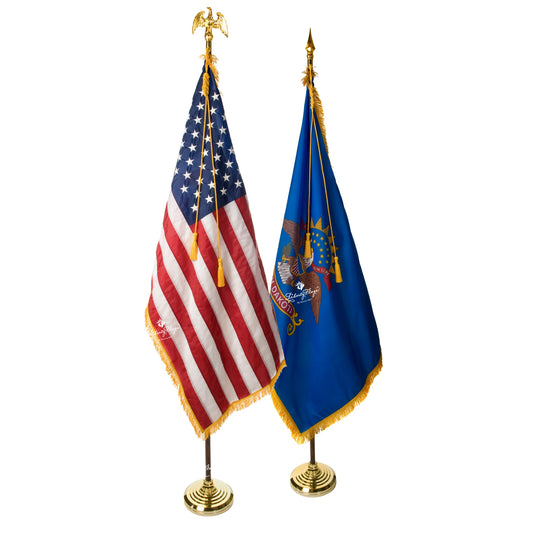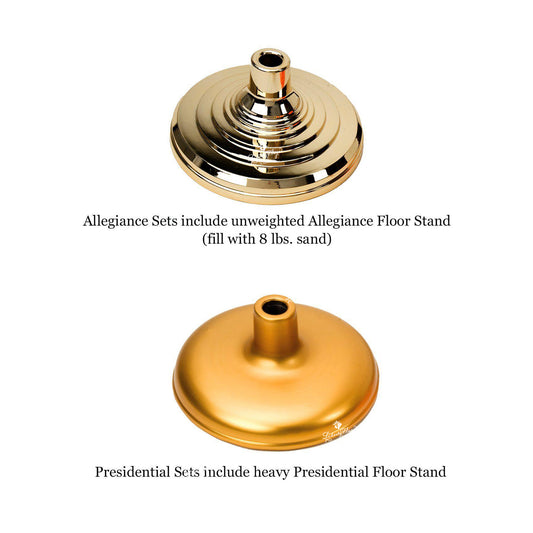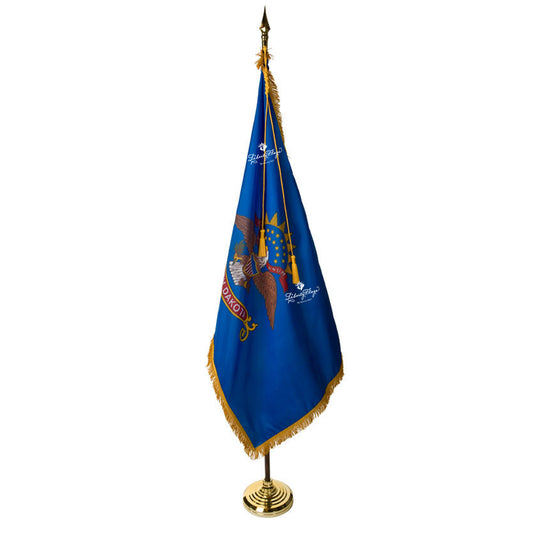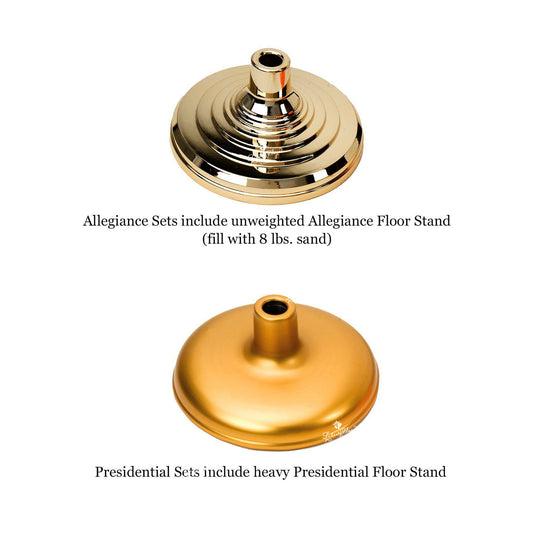Collection: North Dakota Flags
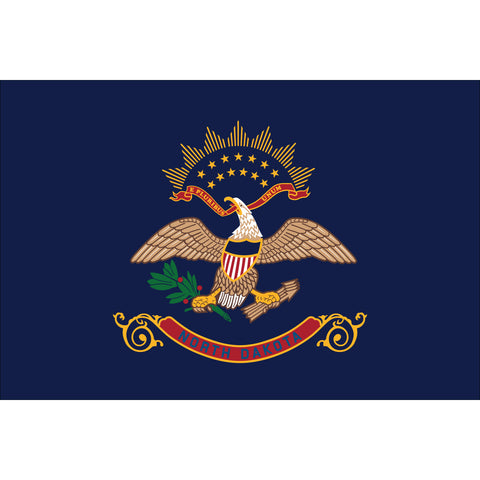
100% American-made North Dakota state flags
North Dakota’s geography has had a lasting impact on many facets of the persona by which it is known today…
North Dakota’s statehood was introduced to Congress as part of a larger bill that also included the statehood requests of South Dakota, Montana, and Washington — the Enabling Act of 1889. As part of the Dakota Territory, the Dakotas experienced disputes that inherently made them rivals. So when President Benjamin Harrison signed the proclamations formally admitting North Dakota and South Dakota, he had the papers shuffled and obscured from him so that no one could know which of the Dakotas was admitted first. Therefore, it is appropriate to state that North Dakota was admitted to the Union on November 2, 1889, as the 39th (or 40th) state.
On its northern border, North Dakota residents can see directly into the Canadian provinces of Manitoba and Saskatchewan. Not far from Dunseith, North Dakota, the International Peace Garden rests across the boundary between North Dakota and the Canadian province of Manitoba. After the Garden was opened in 1937, residents and visitors began referring to North Dakota as the Peace Garden State. The nickname became so popular that it was officially adopted in 1957.
It was known for some time that North Dakota’s location is roughly the center of the North American Continent. Though there is some dispute as to the precise mathematical validity of its location, a cairn in Rugby, North Dakota, bears a placard claiming to mark the exact “Geographical Center of the North American Continent.”
Most of North Dakota is on the Plains, which is why most of North Dakota’s land — roughly 90% — is used as farmland. North Dakota is the Unites States’ leading producer of many varieties of cereal grains and oilseeds.
After agriculture and petroleum, tourism is North Dakota’s third-leading revenue source. This is surprising because North Dakota is considered to be the least visited state in the Union (owing to its not having major tourist attraction). Off-beat attractions like the Maah Daah Hey Trail, the Lewis and Clark Trail, and the Corps of Discovery winter camp are some of what pepper the state with smaller, niche tourist sites. Also, Theodore Roosevelt National Park (in The Badlands in the western part of the state) draws about half a million visitors annually.

